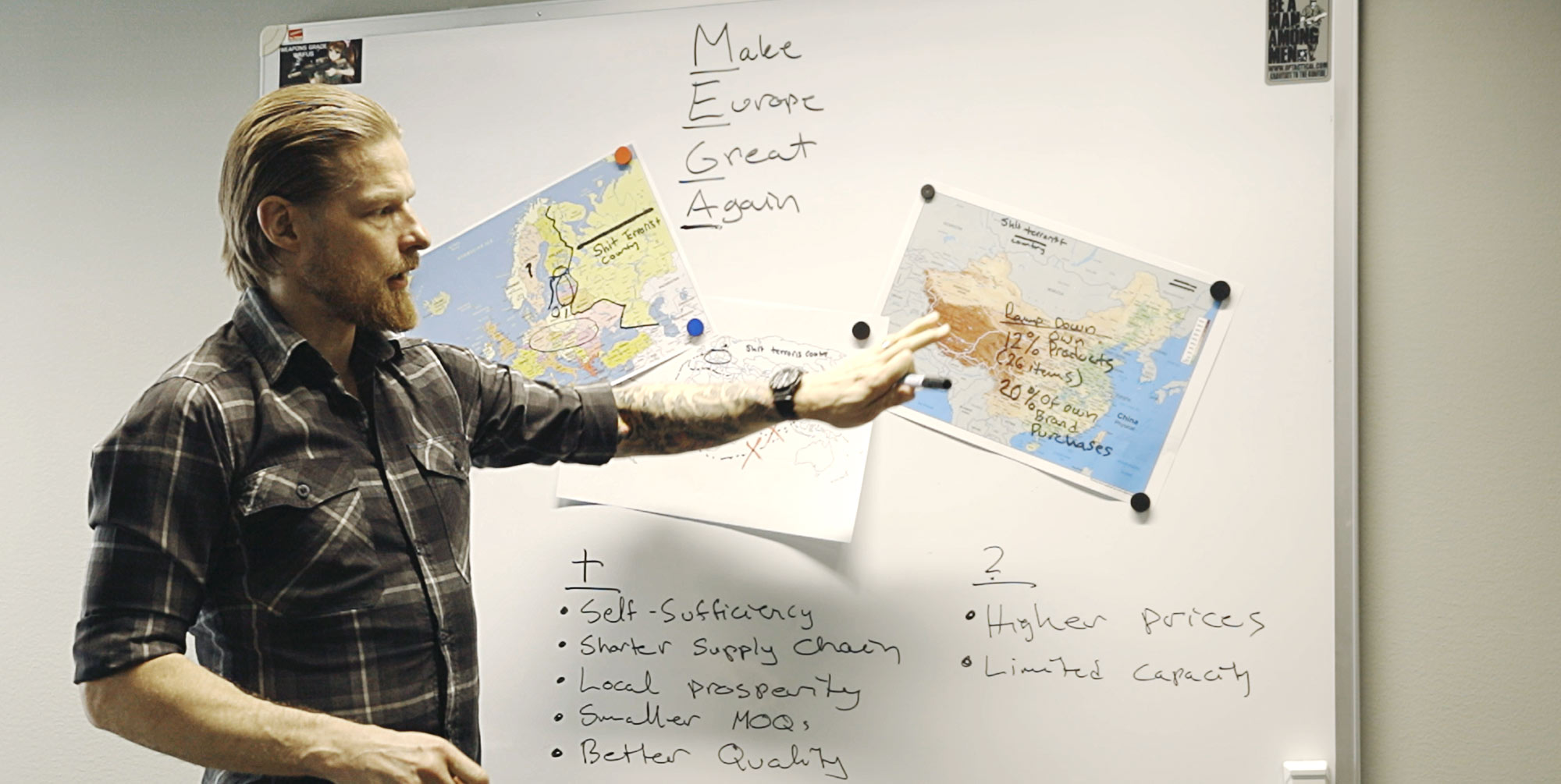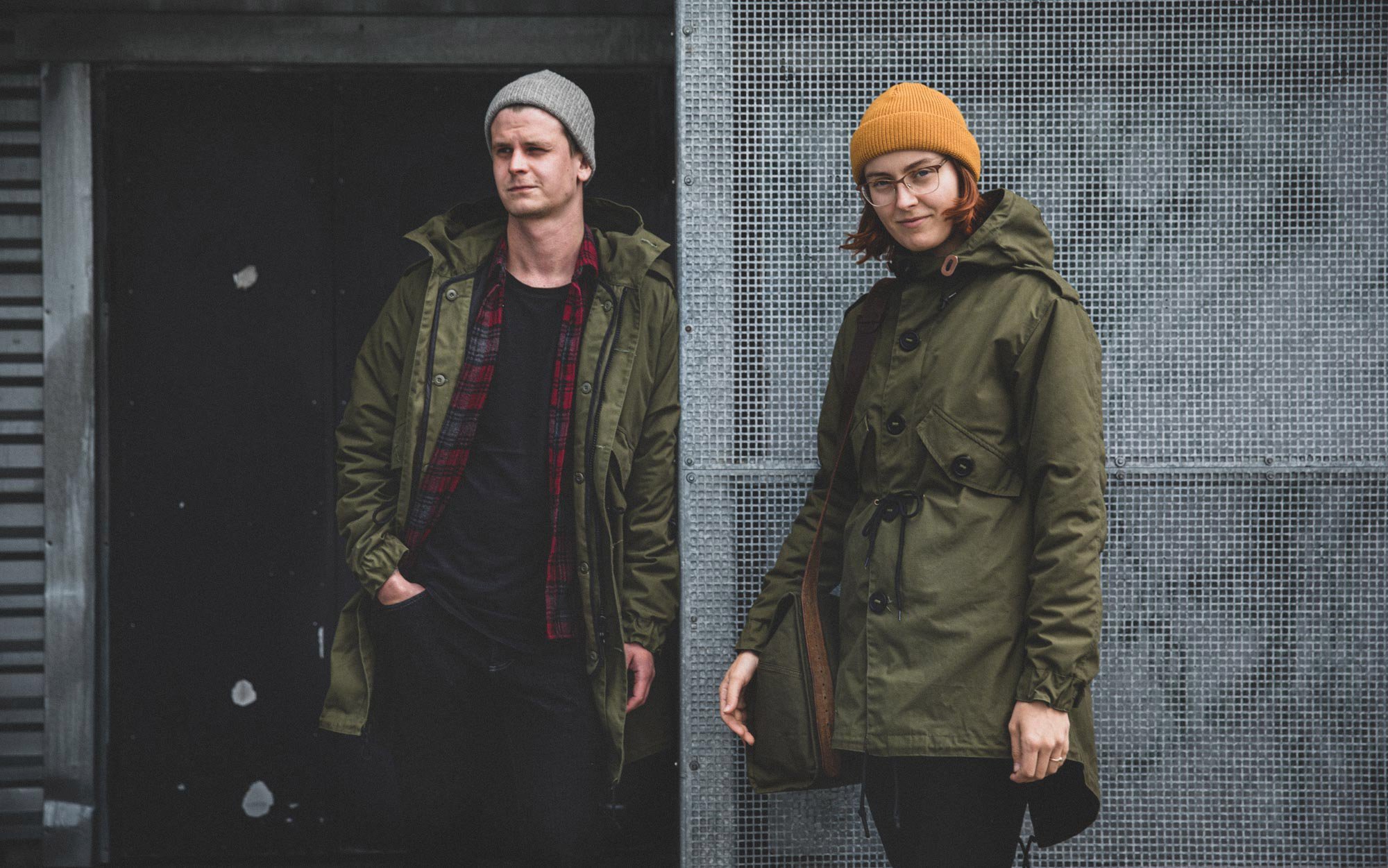
Project MEGA - GTFO of China
Project MEGA - GTFO of China
We have mentioned a certain mysterious project MEGA a couple of times, and now is finally the time to tell a bit more about it.
The Project MEGA stems from "Make Europe Great Again". In 2022, we started our process of terminating our production in China. Chinese factories have been making various Särmä products, such as Windproof jackets, outer shell pants and coats, and bags and backpacks for us. Out of around two hundred textile products made for our brands, 26 have had a Made in China tag. Therefore roughly 12% of them are of Chinese origin. Since the sales volumes have been large, the share of purchases from China for our brands has risen to 20%, measured in euros. If we look at the production volume in kilograms, 44% of our textile products were from China in 2022.
If we look at all the clothing and gear from all manufacturers that pass through our company, 11% of purchases measured in euros came from China in 2022. This means roughly 1.5 million euros.
To sum it up, the total share of purchases from the land of dragons is a lot less than from Finland and other EU countries, but it’s by no means little, especially from the perspective of our own brands. And now we need to push it to zero.
Why all this trouble?
There are multiple reasons behind this decision. We have been feeling iffy about China’s role in geopolitics for quite some time. And, now that the leaders of Russia and China have been getting even friendlier, some action is needed. We believe that every dime we can avoid putting into the national economy of China, should be spent elsewhere. The era of protectionism, blocs, and trade wars seems to have returned, and we need to be able to operate in it. Chinese aid to Russia might lead to economic sanctions and our growing US market does not exactly have the smoothest trade relations with China either.
We are also bothered by the screwed up attitude of the Chinese leaders towards minorities, such as the wide use of Uyghur slave labor in cotton and textile industries. Already in 2021, we did some digging in our supply chain to the best of our abilities and mandated our supplier to purchase the corresponding amount of cotton needed for our products from an Indian producer. However, the fabric origin is tough to trace, as some countries are known to dump cotton to their neighboring countries to blur its original source.
We want to highlight that our Chinese supplier factory has been working well and properly, the people have been lovely, and our cooperation has worked great. We also understand the viewpoint that it is not optimal to leave these people unemployed. Should the fast fashion industry in the east collapse uncontrollably, there would be a massive amount of people, mainly women, without income - not that the income has been satisfactory up to this point either. Our own exit will take some years, giving the factory an opportunity to adapt to the situation.

For example Särmä Windproof clothes have been made in China
Pros and cons
So what’s in it for us? In addition to appearing morally superior, there are some other benefits. Manufacturing closer to our home base allows us to order smaller batches and transportation times will get shorter, which is nice when you don’t want to tie all your money up in big batches.
This move is not going to be without its challenges. Instead of big minimum orders for final products, we will have to order craploads of fabric instead. The capacity of European factories is limited, and the last several years of disruptions due to certain "historical events" have caused some turbulence in the manufacturing business.
Rising costs are the biggest of our challenges. The whole garment production originally got relocated further from Europe because of significantly lower wages. And unlike people often think, Chinese manufacture isn’t just poor quality sweatshops. They also have very modern machinery and very skilled people operating it. As the living standards have been gradually improving in China, the wages have also started to creep closer to the European level. Nevertheless, our costs will be significantly higher after the relocation, as everything is still a lot more expensive here.
As the prices of these products will inevitably change, it makes sense to go through the entire design process together with the new factory to ensure that these products have all the relevant features but nothing unnecessary. As a result, we get an allround improved product. Hopefully the western consumer culture will also be ready for a change towards buying less, but better, and using what we buy well and for a long time.
This isn’t a quick magic trick. The relocation process for one product can take up to two years. However, we’ve already managed to make a lot of progress, and the first batches from the new factories are expected to arrive in summer 2024.

What next?
Unfortunately, this project does not completely free us from China. The country will still remain the dominant producer of technical fabrics and raw materials, and it will be difficult to replace it altogether. However, through this project, we would like to be part of the new renaissance of European production. Especially when thinking about the fabrics used by the defense sector and operators. It’s a great pity that less and less of the production capacity is in our hands. We hope that in the future especially critical, functional textiles could be made in Europe to ensure the security of supply.
Myymälä
00390 Helsinki
Ma-Pe 10:00-20:00
La 10:00-19:00
Su 12:00-17:00
Poikkeukset aukioloaikoihin löydät Myymälän sivulta.
Propaganda
Ota yhteyttä
[email protected]
Ma-Pe klo 08:00-20:00
La klo 10:00-18:00
Su klo 10:00-18:00
Lue lisää Yhteystiedot-sivulta.